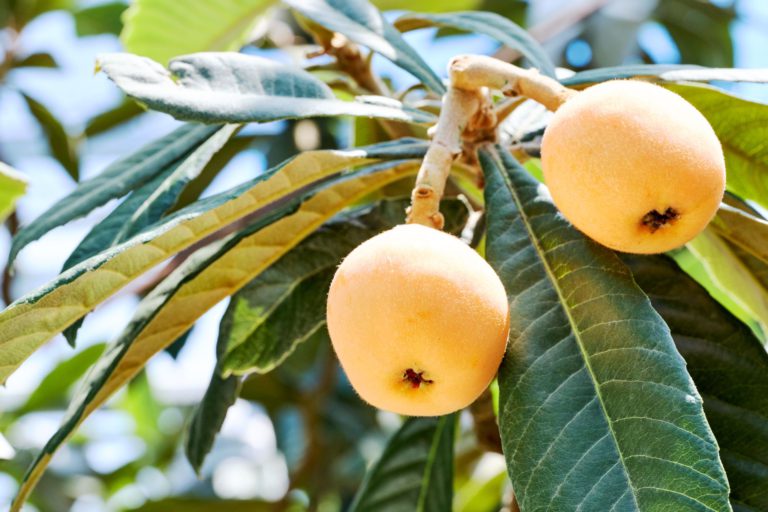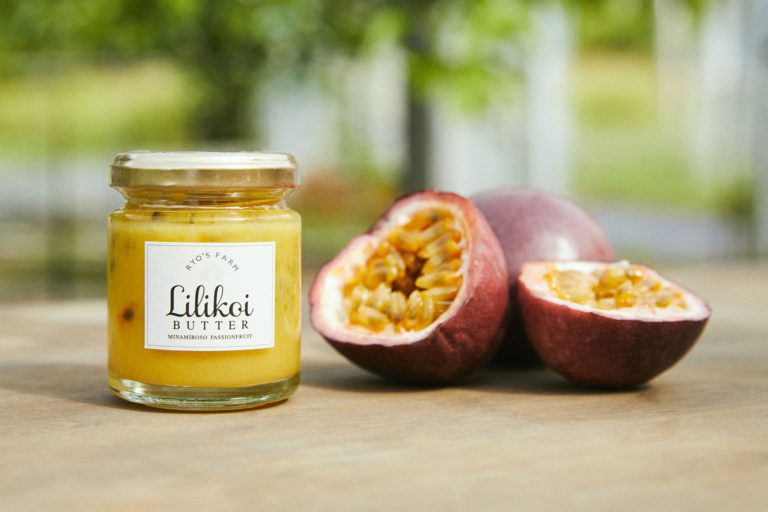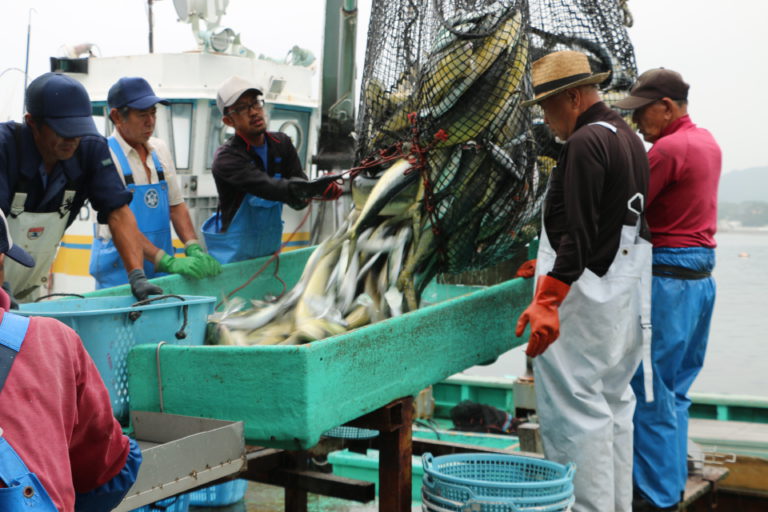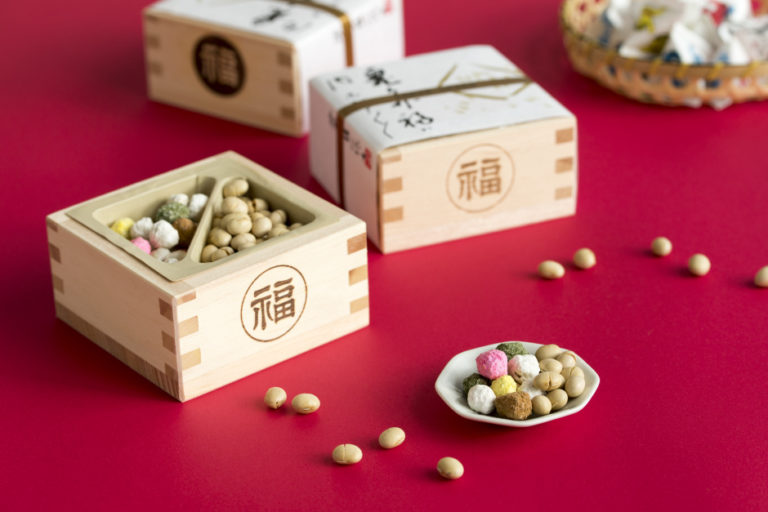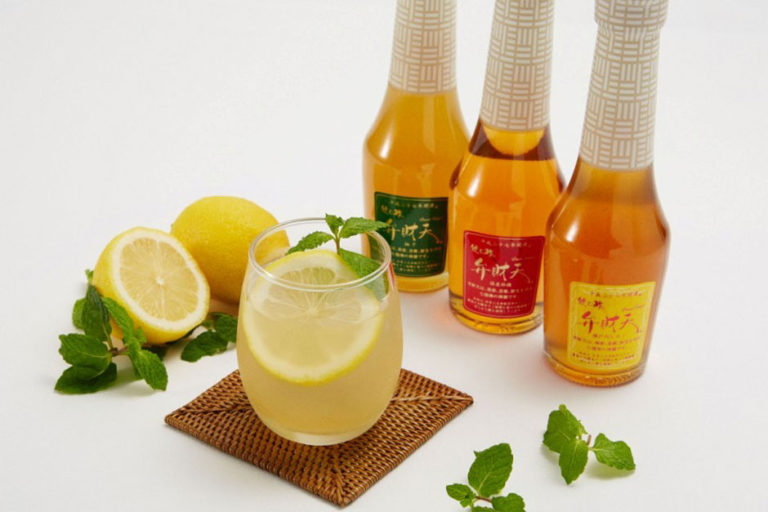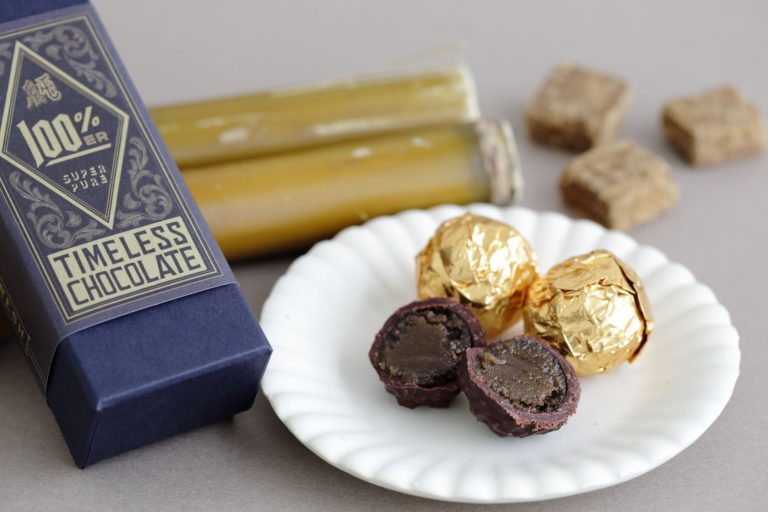Ayu Fishing Season Is Here—Following Young Ayu Fishing on the Edogawa River
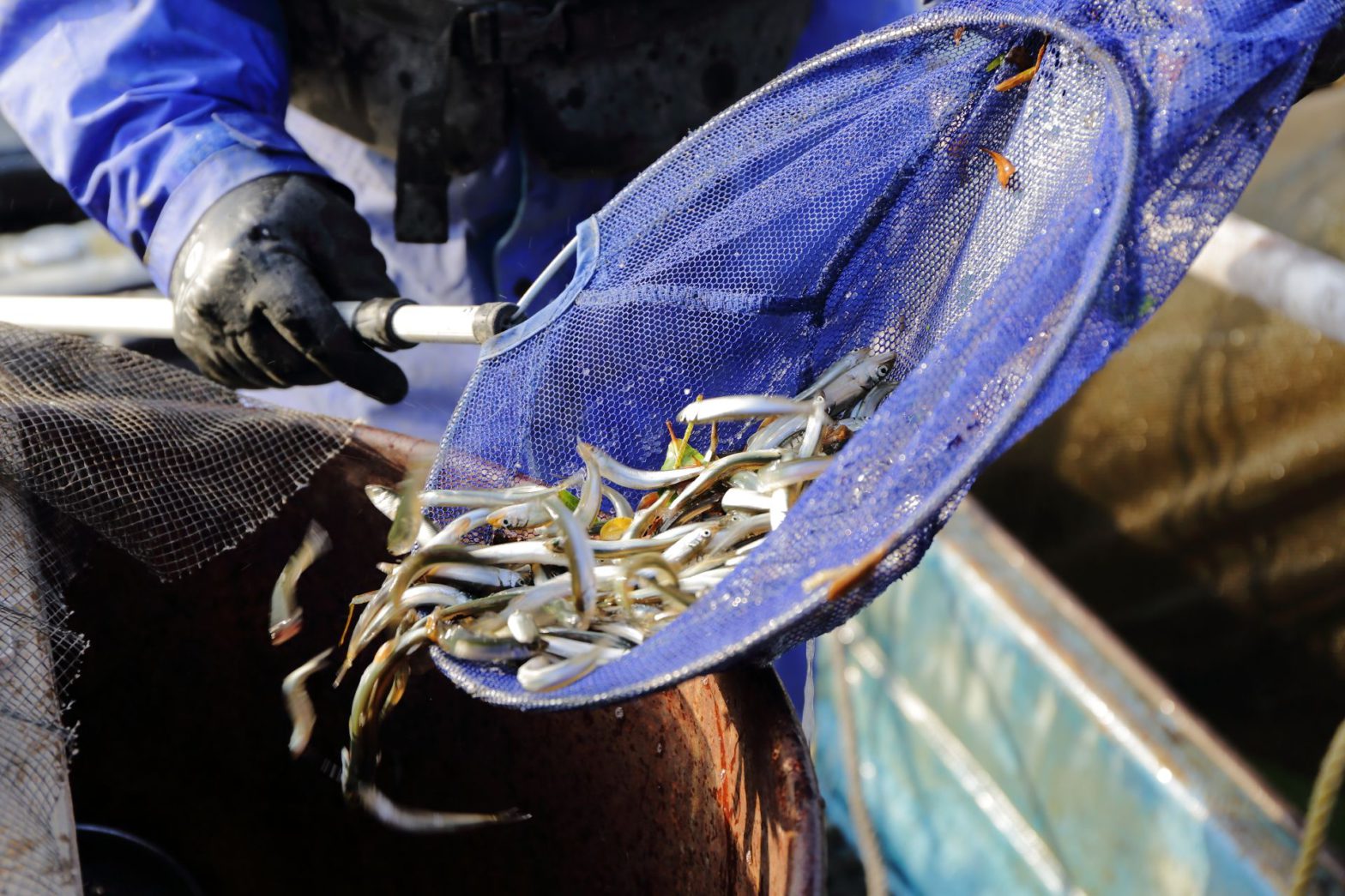
Young ayu fishing as part of daily life on the Edogawa River
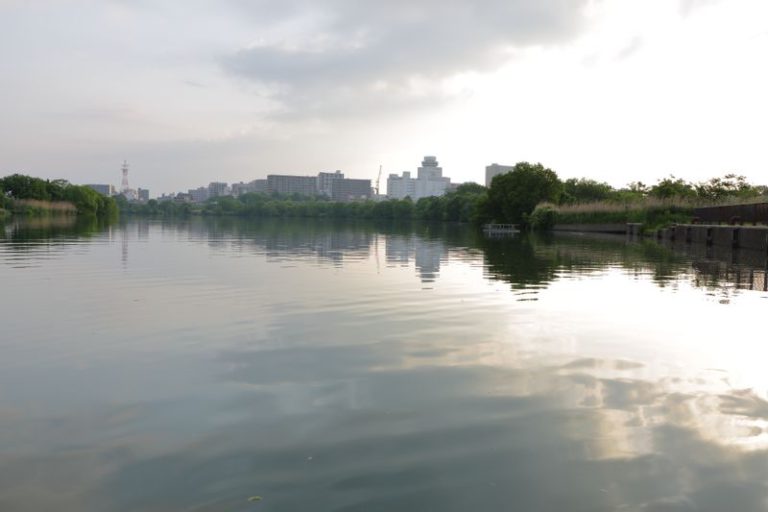
*Brmmmm*. At 6 a.m., the low hum of a small boat engine echoes from the dock beneath Katsushika Bridge. Aboard the boat waits Mitsuru Miyayama of the Matsudo Fisheries Cooperative. Matsudo in Chiba Prefecture is a little-known production area for young ayu, and Miyayama is one of the producers engaged in fishing for young ayu.
The fishing grounds span the Edogawa River, which runs through Ibaraki, Saitama, Chiba, and Tokyo. It branches off from the Tone River and stretches about 60 kilometers. Once a thriving route for transporting goods, it supported the logistics of the great city of Edo. Today, it serves as a vital source of household and drinking water for people in the greater Tokyo area. Near the Katsushika Bridge stands the Kanamachi Water Purification Plant, whose pointed intake tower is a familiar local landmark.
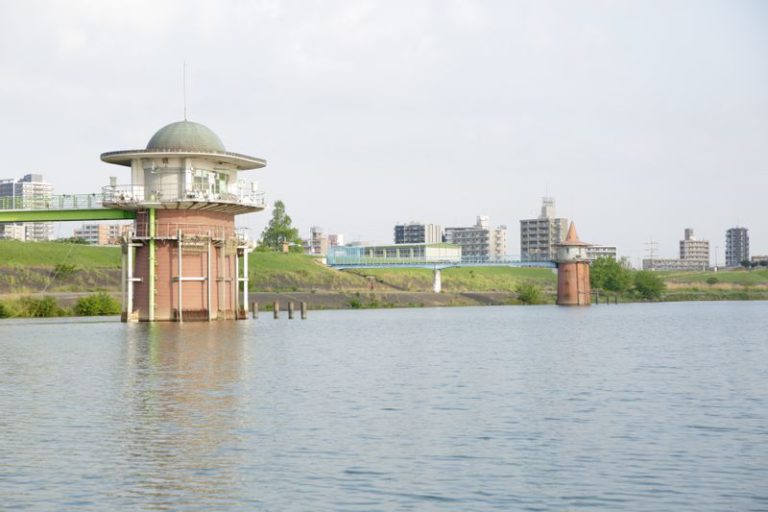
The water of the Edogawa River is divided into three zones: fresh water, which contains no salt; seawater, which contains salt; and brackish water, where the two mix. From the river mouth upstream lies the freshwater zone, home to freshwater fish such as the crucian carp and pond loach.
Ayu are generally thought of as river fish, but in fact they are migratory, traveling between rivers and the sea. In autumn, they spawn in rivers. The babies that hatch then descend to the sea, where they spend the winter. From March through May, they return upstream. Once fully grown, they spawn and complete their life cycle.
The Matsudo Fisheries Cooperative targets groups of young ayu making their way up from Tokyo Bay. During the fishing season, sluice gates that regulate the river’s flow are periodically opened to make it easier for the ayu to swim upstream. The young ayu that are caught are shipped to places in Chiba, Saitama and other prefectures, then released into rivers in time for the opening of the ayu fishing season. The Yoro River in Chiba Prefecture is known as a famous ayu fishing spot, and some of the fish released there come from the Matsudo Fisheries Cooperative.
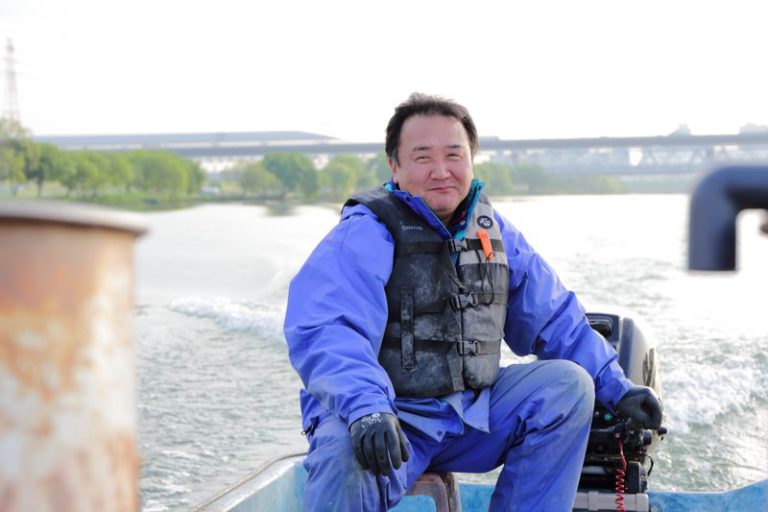
Young ayu fishing has been carried out on the Edogawa River for at least 80 years. The successive directors of the fisheries cooperative were pioneers in the practice, and Miyayama has now been involved in young ayu fishing for eight years.
“When the administrative board first started fishing for young ayu, it seems they had quite a hard time. There are hardly any records from back then, but I imagine they were working almost entirely by trial and error. Thanks to the strong leadership of our current president, Mr. Watanabe, we’ve been able to keep the operation going, albeit on a small scale.”
Searching for young ayu downstream as the season winds down
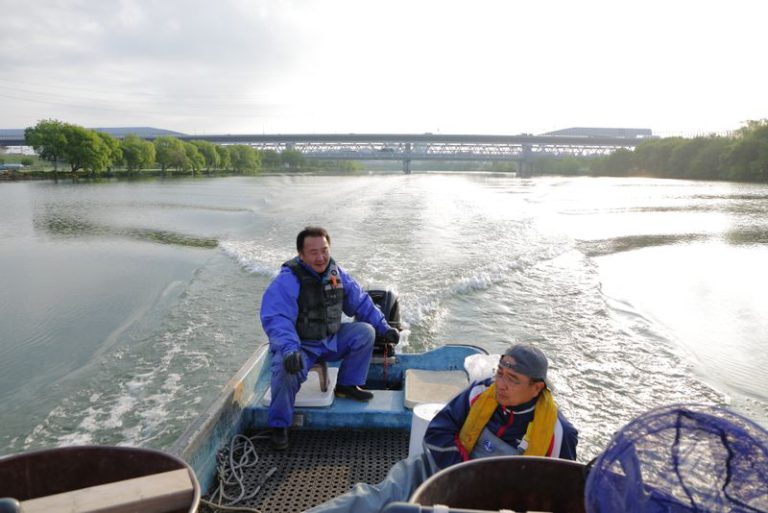
Young ayu fishing takes place every other day, with teams of two working together. On this day, Miyayama meets up with his work partner, Makoto Hayashi, and they set off from the dock. Just moments earlier, the two had been joking around—but as the fishing begins, tension creeps into Hayashi’s expression.
“We’re getting close to the end of the season, and lately we’ve had a string of days where we just can’t catch as many as we’d like. I wonder how it’ll go today… The peak season really is April. The first wave of young ayu that arrives around the spring equinox is especially lively. Their bodies are plump, and they’re noticeably larger. We call those ‘good sized’.”
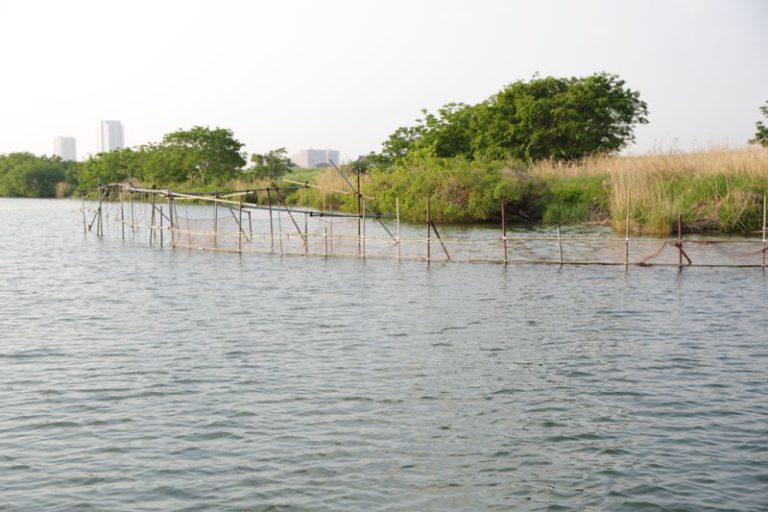
About 15 minutes downstream on the Edogawa River, a fishing setup for catching young ayu comes into view near the Yanagihara sluice gate. Nearby, a baseball field stretches out along the riverbank, and the land is so close it feels like you could just step right up onto it. “I doubt many people in Matsudo even know about what we are doing,” Miyayama remarks, claiming that young ayu fishing quietly blends into the everyday scenery.
The setup is a stationary net, designed so that once fish enter, they can’t easily escape. The young ayu swimming upstream follow a passage called the “sleeve” that leads deeper and deeper into the net. Eventually, they reach the “bag” section at the end which holds them. The sleeve is wide at the entrance and gradually narrows toward the back. As a result, fish larger than young ayu can’t make it all the way into the bag.
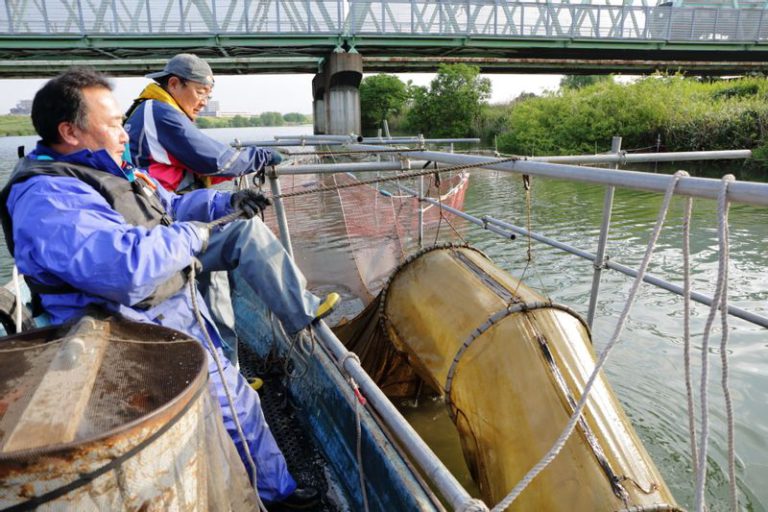
As the stationary net was pulled up to the surface, both men let out a small “Ooh!” almost in unison. Inside the bag, countless silvery young ayu were jumping about. Each was about the length of an adult’s index finger. “They’re lively, and not a bad size,” said Hayashi.
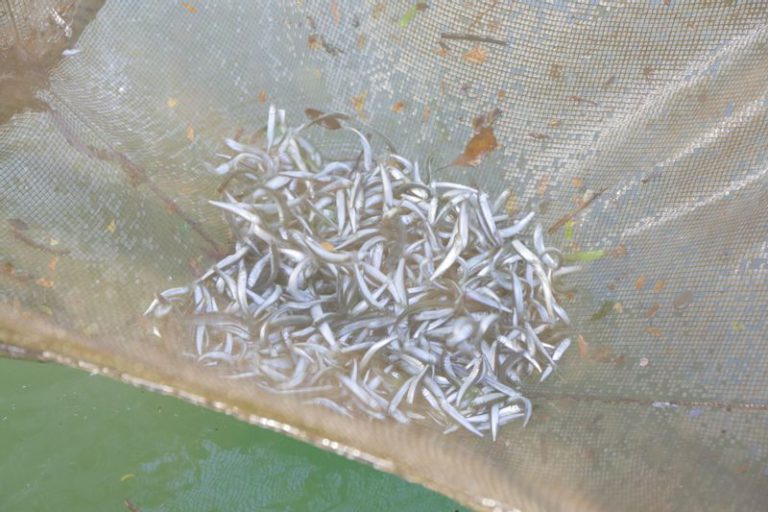
Miyayama quickly grabbed a net and began scooping the young ayu into the livewell on the boat. The livewell is a modified drum barrel, with river water constantly flowing through it. Without that flow, the fish would quickly run out of oxygen. That’s just how energetic wild young ayu are—in fact, they were swimming around so vigorously it looked like they might leap right out.
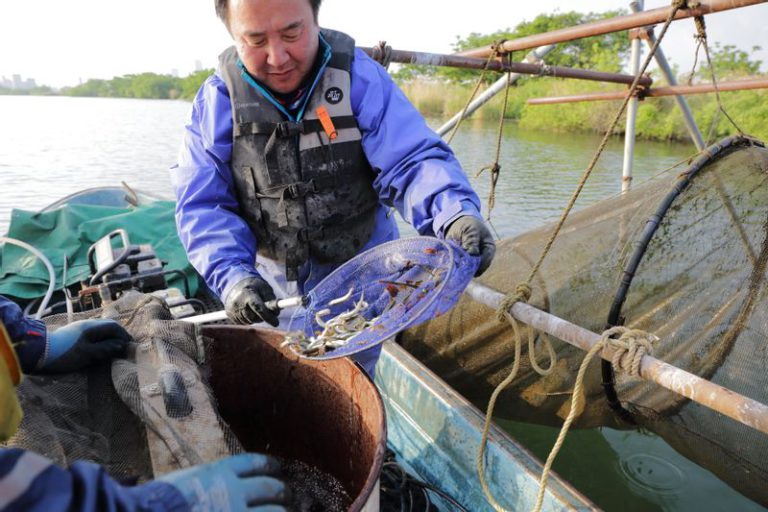
That day, they checked two different setups and caught about three kilograms of young ayu in total. Compared to the peak season, it wasn’t a particularly large haul, but Hayashi smiled and said, “Well, at least we managed to make it look respectable.”
Preserving the tradition of young ayu fishing beyond the peak season
The young ayu are kept in a livewell near the dock, waiting to be shipped out. Last year, they were able to ship about 100 kilograms, but fishing in nature is never straightforward. In some years, river flooding has prevented them from shipping anything at all. Plus, Hayashi says that the catch has been gradually decreasing.
“Back when Mr. Hiraoka was overseeing the young ayu fishing operation at the Matsudo Fisheries Cooperative, I heard they were catching several hundred kilograms. But after the Great East Japan Earthquake, the catch dropped off significantly. Still, there’s steady demand for ayu fishing, so it’s not something we can just walk away from. It would help if the sluice gates could be opened a little more often, but then there’s the risk of seawater flowing into the Edogawa River…”
In search of solutions, the Matsudo Fisheries Cooperative continues trying different approaches.
“We’re doing everything we can to keep the long-standing tradition of young ayu fishing in Matsudo alive. That’s what drives us. It’s a constant process of trial and error—changing the number of setups, switching locations. I think this year’s setup has gone pretty well, actually.”
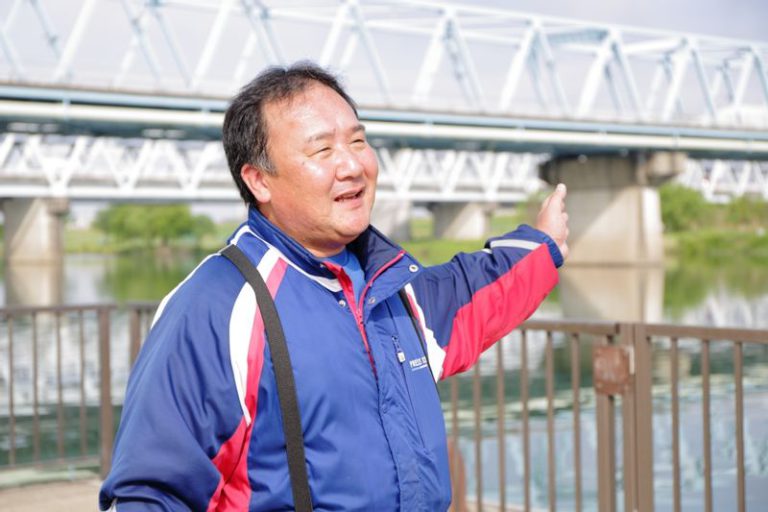
For Miyayama, the sense of accomplishment when a fishing trip goes well seems to be part of what keeps him going.
“When we get a big catch, I honestly feel like throwing a fist pump. Young ayu are unpredictable, so the joy of catching them is all the greater. Not long after I started fishing, I had some ayu tempura, and it was so delicious it really moved me. I couldn’t help but wonder—maybe it was young ayu we’d caught here in the Edogawa River. That thought made it feel strangely meaningful.”
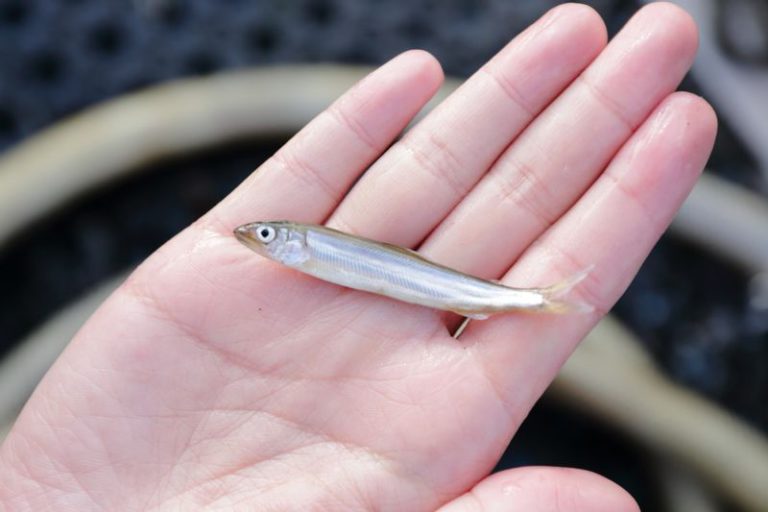
Young ayu fishing has quietly been carried on for generations on the Edogawa River. The taste of ayu, a familiar symbol of summer, is made possible by the work of producers like these. Instead of eating them without a second thought, we should savor their flavor and appreciate the story each fish carries.

